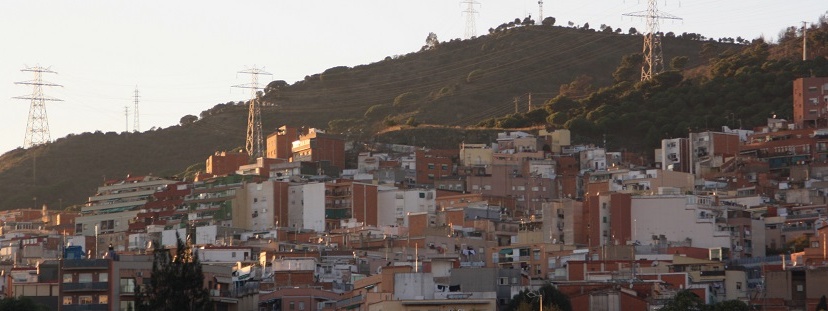
This post was written by Lucia Caistor Arendar and first published by the Young Foundation on May 22, 2013.
The RSA recently hosted an event called 'Are diverse communities possible?' where Zachary Neal, assistant professor of Sociology and Global Urban Studies at Michigan State University, presented the potentially paradoxical relationship between neighbourhood integration and cohesion. This issue strongly resonates with the work we have been doing at The Young Foundation on community resilience. His argument was compelling, and asks whether creating diverse communities can actually do more harm than good.
For Neal there are two central behaviours that determine how we form our social networks and community ties. The first is the idea of 'homophily' - that we have a tendency to create relationships with people that are similar to us because we are drawn to likeness. The second is 'proximity' - that we are more likely to develop relationships with people that we share a spatial connection with, such as people who live in the same neighbourhood. In other words, community cohesion is developed by building relationships with similar people that live nearby. This may seem like a benign assertion, but according to Neal, it means that when there are different kinds of people living in proximity to one another this will adversely affect the development of local social networks.
This observation is not a new one. Recently in Robert Putnam's study on ethnic diversity and trust in communities across the US, he concluded that ethnic diversity is likely to diminish social capital and trust between citizens. It also reminds me of an observation made by the sociologist Richard Sennett in the seventies in his Uses of Disorder from 1970. He said there that people fear the unpredictability of human interaction and therefore choose to avoid building relationships with unfamiliar people . And back at the turn of the last century, in The Metropolis and Mental Life the sociologist Georg Simmel posited that in order to survive in the modern metropolis we need to distance ourselves from strangers. He wrote of the "mental attitude of metropolitans toward one another [that] we may designate, from a formal point of view, as reserve. As a result of this reserve we frequently do not even know by sight those who have been our neighbours for years."
At a glance, it seems alarming to suggest that segregated communities are more cohesive. But does Neal have a point, can too much diversity impact on the ability of people to create the social bonds that hold a community together? I think it can. But impeding cohesion isn't necessarily a bad thing. As Neal pointed out, too much cohesion can produce "very dense networks" of closely knit communities that are strong, but also exclusive. The RSA's Matthew Taylor made a similar point during the event arguing that, "mono-cultural spaces are less dynamic" and create stagnant communities that stifle creativity. Clearly the mixing of people with different incomes, ages and ethnicities can stop communities becoming too tightly bound.
On a practical level, Neal's approach does chime with the work we have been doing on resilient communities. Over the past year at The Young Foundation we have been looking into how wellbeing can be measured at the local level. Research in two neighbourhoods, one in Malmö (Sweden) and one in Barcelona (Spain), illustrated the tension between integration and cohesion. We found that the more homogenous communities showed characteristics of 'survival' resilience - where social bonds were strong but also defensive and introverted; whilst the more integrated communities showed more evidence of 'adaptive' resilience - where people were open to new ideas and connections from outside the community cluster but these relationships weren't always strong enough to make things happen.
Although the conflict between integration and cohesion is a useful lens for looking at the behavioural trends in communities, it is important not to overly simplify community dynamics. Neighbourhoods are complex entities with multiple communities interacting with each other; in our case studies, diverse groups, isolated groups, strong networks and weaker ones all existed in these places simultaneously. Also, we can't just focus on commonality, as this is only one of many factors that determine neighbourhood relations.
Nevertheless, it is important to identify the communities where integration and cohesion are directly coming into conflict, for example when a group of new residents move into an existing neighbourhood with a different economic or ethnic background to their own. So is there a way of breaking this trend? If you accept that we are more likely to relate to similar people, then perhaps one solution is for us to broaden the types of people who we consider to be 'like us'. Neal gave the example of universities as spaces where people with different backgrounds might become homophilic by developing a common interest. But universities obviously cannot be embedded in most communities and besides often sit within a bubble of their own.
Neighbourhood activities can cultivate networks by opening up the potential for new relationships to form with different people that live nearby. Take the GoodGym for example, a befriending service that has provided people living in proximity - but who would not usually interact - with a mutually beneficial arrangement. Similarly The U, a venture set up by The Young Foundation, shows how neighbourhood spaces can also be used. The U brings together diverse groups of individuals in a community setting who may not ordinarily meet, to connect and share socially useful skills with one another. According to the U's director Radhika Bynon "positive local experiences help make you feel like you belong".
As the examples above show, the social connectedness of communities can be reinforced without them becoming too closed and homogenous. With communities growing and increasingly competing for resources, there is even more of an imperative to test out ideas within communities and create spaces where we can re-adjust how we define who we are and who the collective is.